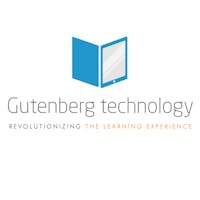Disruptive forces in academic publishing have turned traditional models on their heads. While some publishers are stuck in the more traditional print publishing lifecycle, others are innovating—welcoming new tools and organizational changes into their workflows and cutting their time-to-market in half.
With digital content’s popularity on the rise and older, used editions of print texts still haunting college bookstores, innovative publishers are turning to a new model of content creation—digital first.
This new approach is fueled by trends that have impacted academic publishing over the past decade, including:
- The Rental Market: Companies like Wiley report textbook rental as the major cause for their recent 27% revenue decline in their Q3 (compared to 2016). Others have entered the rental game with an “if you can’t beat ‘em, join ‘em” mentality.
- Open Educational Resources (OER): Lumen Learning’s David Wiley recently predicted that OER will eradicate textbooks in community colleges by 2024, forcing companies to redefine “affordable” with new products, such as MindTap ACE from Cengage.
- Digital: In the past two years, sales of ebooks, learning solutions, and other digital products have begun to surpass print for the first time at companies such as McGraw-Hill.
- Decreasing Enrollments: A study by the National Student Clearinghouse Research Center estimates postsecondary enrollment declined by 1.4% in the fall of 2016. Many institutions are responding with tuition increases. To compensate, administrators are looking at learning materials as the first place to start cutting costs for students.
For publishers, going digital first is a radical change. It means the content needs to be reconceptualized—from the rigidity of the printed page to the fluidity of computer, tablet, and mobile phone screens. Content, assessment, and multimedia must all be carefully composed and have a specific learning design purpose. Meanwhile, production processes need to be holistically reexamined and flipped to support the e-learning process first and foremost. This is far different than editing a textbook and then digitizing it, which takes longer than the traditional print production timeline.
More often than not, digital materials are priced less than a printed text, despite its higher costs to produce and maintain. The return lies in the consumable nature of digital—there is no such thing as buying a used digital textbook—and the rolling revenue each semester.
“When we design a digital-first solution,” says Cheryl Costantini, Vice President of Content Strategy at Cengage, “we think about both the content and the expression of that content in a digital ‘platform’ simultaneously. Content doesn't come before or after the digital features. And content isn’t just separated into narrative—and everything else.”
It's a daunting task, the movement to digital first. For publishers, it means a shift in thinking, a movement to new programs, and a revolution in content format and delivery. But it’s all doable.
As a former product manager of higher ed textbooks, and now the Director of Global Content Strategy for Gutenberg Technology, I’ve had hands-on experience in the shift to digital—and have a macro view of the industry and its pain points. With that in mind, I offer five tips to a successful digital-first migration.
1. Change Your Whole Organizational Mindset
The old way of making a textbook—and let’s face it, buying a textbook—is dead. (Pause for a moment of silence.) Evolution in this industry means a shift in organizational thought, a complete reimagining of how a learning solution goes from ideation to published reality, how it is priced and sold. But organizational change is a challenge for any industry, especially one as deeply seeded in tradition as print publishing. (Just ask any author.) “We can’t merely digitize a textbook,” said Costantini. “Rather, we need to reorganize, remove, and improve upon that content so that we take advantage of all that digital offers.”
From content to process, digital-first production means:
- reexamining the content you have
- reinventing for industry trends both in learning design styles (microlearning, anyone?) and media types such as GIFs and podcasts
- keeping content updated and personalized—because reprint corrections are so last year
2. Get on the Same Page, Literally
Real-time development tools, like those found in MyEcontentFactory or Google’s Action Items, allow for simultaneous editing in the same document. According to a report by the McKinsey Global Institute (MGI), workplace integration of more social development tools like these could increase productivity by 20-25 percent.
For content development and production, this means several things:
- a drastic decrease in back-and-forth communication with authors and vendors
- more options to overlap traditionally back-to-back production tasks like design and copy editing
- less margin for error with an increase in employee accountability
Plus, millennials love it. Welcome to the cloud, publishing industry. Now let’s make it rain.
3. Automate, Don’t Perpetuate
Digital First doesn’t eradicate the need for print. It merely means Print Second. In fact, research has found that 92% of college students prefer the print medium when reading. So with more customers turning to bundles combining digital content with loose-leaf editions, publishers would be wise to consider automated print design to increase their ROI.
“Print automation is the new frontier for publishers,” says Gjergj Demiraj, CEO of Gutenberg Technology, U.S. “How content is displayed on the printed page should never be hidden from authors and editors as they create their content.” The potential to generate an automatic print preview for a textbook at any time in development is revolutionary, reducing the production time by months to deliver both digital and printed materials to customers before the first day of class.
4. Make Your Content Invaluable with Metadata
A truly robust 21st century digital solution proves its results. I’m talking about mainstreaming the metadata tagging process when it comes to learning outcomes, career skills, or state standards. As enrollments decrease, institutions are feeling the pressure to prove their efficacy, which in turn adds pressure to instructors who need to measure student improvement.
Metadata tagging is a necessary piece of the digital puzzle; crafting metadata tags is a skill that takes into account the complexity of pedagogy, the need for accessibility, and the requirements to measure student progress. With metadata tagging, we gain a level of personalization in our learning materials never before imagined in print. And as artificial intelligence (AI) becomes more mainstream, we’ll all welcome a more automated method of tagging content and assessments to specific objectives in order to help instructors better report on student success.
5. Don’t Just Create, Curate
Central to any digital-first strategy is the effective implementation of a learning content management system (LCMS). “We don’t currently have a seamless ecosystem of tools that support easy and simple content discovery and authoring,” says Costantini. But “our content requires that support.” With the proper LCMS, metadata tagging makes content storage, retrieval, and curation easier for developers. Subjects, reading levels, word count, learning objectives, rights clearances, and authorship can all be tagged to allow for faster, simpler content curation—leaving more time for innovation.
So, to all you publishers going digital first, the road is long. Look to those that have made the transformation before you: print journalism, music, and film. Learn from their mistakes. Become the Netflix of textbooks, rather than the Blockbuster. And if you don’t do it for your ROI, do it for the learners. They are the ones who will profit as their materials grow cheaper, their content becomes personalized, and their engagement levels increase.
Gutenberg Technology's MyEcontentFactory is a simple, yet powerful, SaaS offering LCMS that empowers content producers to:
- Collaboratively create learning material with authors, editors, assessment writers, and vendors in real time
- Search, curate, and store multimedia learning objects in a single, searchable database
- Manage metadata tags from subject matter to learning outcomes for all content types
- Make content accessible to all users, despite their learning obstacles
- Focus on digital first, while keeping print design always within your preview
- Publish to the web and mobile devices in seconds



